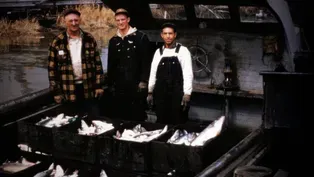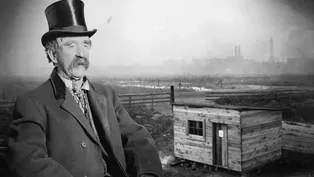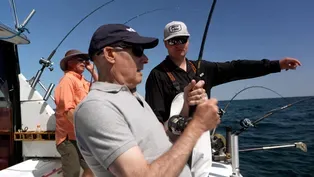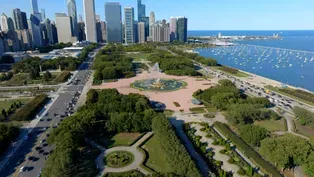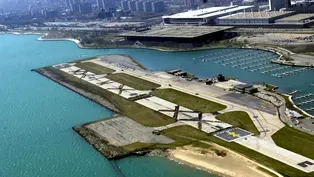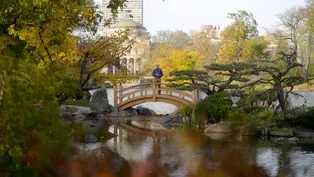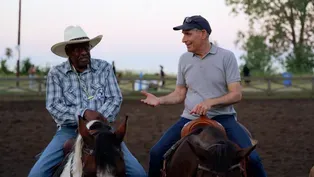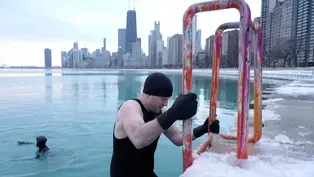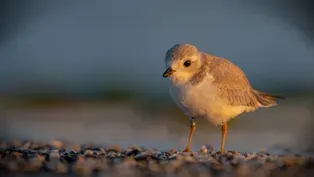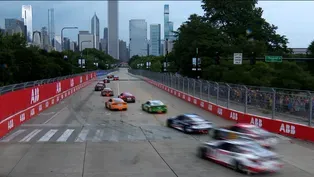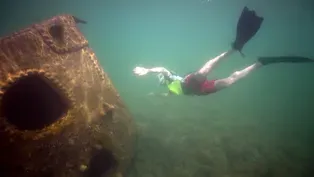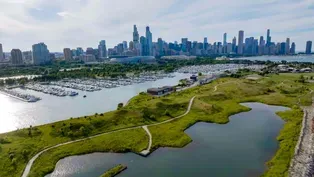
31st Street Beach and the Red Summer of 1919
Clip: Special | 4m 45sVideo has Closed Captions
Racial violence in Chicago first exploded at a lakefront beach during the Red Summer.
On July 27, 1919, Eugene Williams, a Black 17-year-old boy playing in Lake Michigan at a beach near 29th Street, floated across an invisible – and unofficial – color line segregating the swimming area. A white man hurled stones at Williams, who slipped under the water and drowned.
Problems with Closed Captions? Closed Captioning Feedback
Problems with Closed Captions? Closed Captioning Feedback
Chicago Tours with Geoffrey Baer is a local public television program presented by WTTW

31st Street Beach and the Red Summer of 1919
Clip: Special | 4m 45sVideo has Closed Captions
On July 27, 1919, Eugene Williams, a Black 17-year-old boy playing in Lake Michigan at a beach near 29th Street, floated across an invisible – and unofficial – color line segregating the swimming area. A white man hurled stones at Williams, who slipped under the water and drowned.
Problems with Closed Captions? Closed Captioning Feedback
How to Watch Chicago Tours with Geoffrey Baer
Chicago Tours with Geoffrey Baer is available to stream on pbs.org and the free PBS App, available on iPhone, Apple TV, Android TV, Android smartphones, Amazon Fire TV, Amazon Fire Tablet, Roku, Samsung Smart TV, and Vizio.
(light music) (birds chirping) - The beach at 31st Street is lovely, but behind the beauty is a dark history.
I am still just struck by looking behind us, how beautiful it is.
- What a beautiful scene that turns incredibly tragic.
- [Geoffrey Voiceover] Historian Courtney Joseph and I gaze across the water and across time to a spot where racial violence exploded in the red summer of 1919.
- What I wanna start with is Eugene Williams.
- Yeah.
- I mean, you know much like Emmett Till, he's the kid who got murdered.
- Yeah, unfortunately.
- But what was he like?
Do we know what Eugene Williams was like?
- We do.
We know a little bit about him.
His parents migrated to Chicago anywhere from 1906 to 1909.
(light music) - [Geoffrey] It was the beginning of the first wave of the Great Migration.
Approximately 2 million African Americans fled the rural South for industrial cities in the North.
Because of racist housing policies in Chicago, most migrants were restricted to living in a narrow strip along South State Street, today known as Bronzeville.
- The places now that you can kind of do like Black history tours and stuff, kind of not too far away from where we are right now.
- [Geoffrey] It was hot on July 27th, 1919 when Eugene Williams and several friends headed to the beach and jumped into the lake holding onto a homemade raft.
Chicago in 1919 was officially integrated, but many of its parks were defacto segregated.
A 24-year-old white man named George Stauber apparently believed the boys drifted across an invisible color line.
Witnesses later said Stauber was standing on a pier when he began throwing rocks.
- When one hits Eugene in the side of his head and he begins to drown and his friends, who also cannot swim that well, cannot save him.
And they're also being attacked with these rocks.
And they swim away.
And by the time anyone can go, he has already passed away.
- [Geoffrey] A group of African American beachgoers approached a white police officer on the beach and demanded that the rock thrower be arrested.
- And not only did the police not want to make the arrest, but stood in when a Black officer tried to step in to arrest the man, stopped him from doing it.
And an African American shoots a gun into the air and the police then shoot into the crowd.
And from there, the riot begins.
- [Geoffrey] The melee spilled over into surrounding neighborhoods.
White mobs targeted Black homes in Bronzeville in particular.
- [Courtney] So arson and beatings and looting of property and all sorts of things happen that the police themselves can't quell and in many ways don't try to.
- [Geoffrey] It was the worst possible homecoming for some Black residents of Chicago who expected a hero's welcome after fighting for the US in the First World War.
- One of the most infamous photos is a soldier dressed in his uniform standing toe to toe with a white Chicagoan.
They're looking at each other in the eye and there's this defiance in the photograph of like, "You know, I'm a US soldier.
How could that not be more American?"
And instead it's this, you know, need to kind of put them back in their place as second-class citizens that I think is part of the powder keg that pops on that July day.
(dramatic tense music) (somber music) - The riot raged for a week, before Governor Frank Lowden called up the National Guard, and order was finally restored.
Thousands were injured in the riot, which left 38 people dead, 23 Blacks and 15 whites.
George Stauber, the alleged rock-thrower was charged with manslaughter, but was acquitted.
It took 90 years for the city to recognize the tragedy with a granite marker along the lake.
The plaque quotes Dr. Martin Luther King: "Darkness cannot drive out darkness.
Only light can do that."
Calumet Fisheries and the Legacy of Commercial Fishing
Video has Closed Captions
Clip: Special | 3m 51s | Calumet Fisheries is a rare survivor of Chicago’s commercial fishing days. (3m 51s)
The Con Man Who Staked a Claim on Streeterville
Video has Closed Captions
Clip: Special | 2m 3s | Chicago’s Streeterville neighborhood was once a seedy vice district. (2m 3s)
Video has Closed Captions
Clip: Special | 5m 52s | Geoffrey Baer embarks on a fishing trip on Lake Michigan. (5m 52s)
Grant Park: Forever Open, Clear, and Free
Video has Closed Captions
Clip: Special | 6m 42s | A. Montgomery Ward launched a legal battle to preserve the lakefront for the people. (6m 42s)
How Meigs Field Became Northerly Island (Again)
Video has Closed Captions
Clip: Special | 4m 34s | A former lakefront airport has become a green space once envisioned by Daniel Burnham. (4m 34s)
Jackson Park and The White City
Video has Closed Captions
Clip: Special | 2m 1s | Jackson Park was the site of the World’s Columbian Exposition. (2m 1s)
Jean Baptiste Point DuSable's Lakefront Homestead
Video has Closed Captions
Clip: Special | 3m 20s | Jean Baptiste Point DuSable built a homestead at the convergence of the river and lake. (3m 20s)
Video has Closed Captions
Clip: Special | 3m 44s | A horseback riding club teaches equestrian skills to a new generation. (3m 44s)
Meet Chicago's Winter Swimmers
Video has Closed Captions
Clip: Special | 4m 49s | Meet the swimmers who swim in Lake Michigan year-round – even in winter weather. (4m 49s)
The Montrose Beach Piping Plovers
Video has Closed Captions
Clip: Special | 4m 35s | Montrose Beach became a nesting site for piping plovers in 2019. (4m 35s)
The NASCAR Chicago Street Race
Video has Closed Captions
Clip: Special | 2m 56s | Geoffrey Baer visits the NASCAR Chicago Street Race. (2m 56s)
Video has Closed Captions
Clip: Special | 4m 44s | A shipwreck sits just 600 feet off Chicago’s lakefront on an ancient reef. (4m 44s)
The Surprising History of Promontory Point
Video has Closed Captions
Clip: Special | 1m 32s | Promontory Point is yet another example of Daniel Burnham’s Plan of Chicago. (1m 32s)
Touring Chicago's Lakefront Trailer
Video has Closed Captions
Preview: Special | 1m 1s | Preview Touring Chicago's Lakefront, combining history and shining light on contemporary challenges. (1m 1s)
Providing Support for PBS.org
Learn Moreabout PBS online sponsorshipSupport for PBS provided by:
Chicago Tours with Geoffrey Baer is a local public television program presented by WTTW
